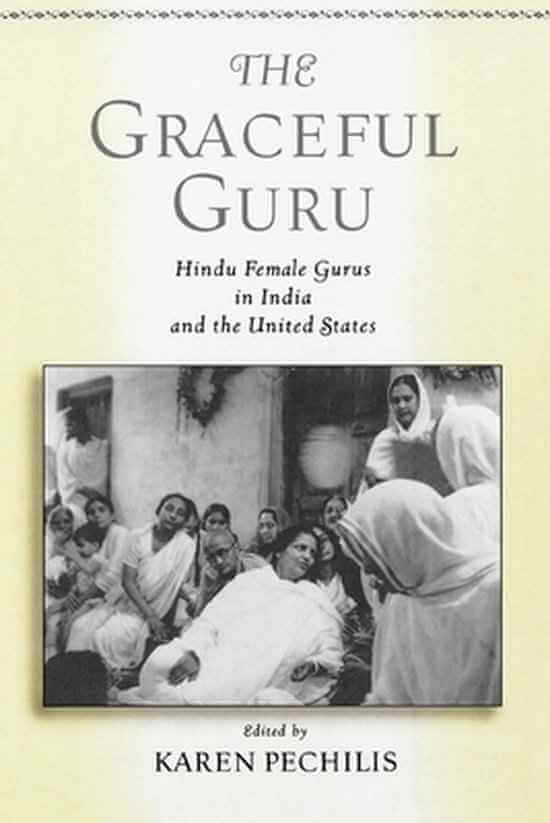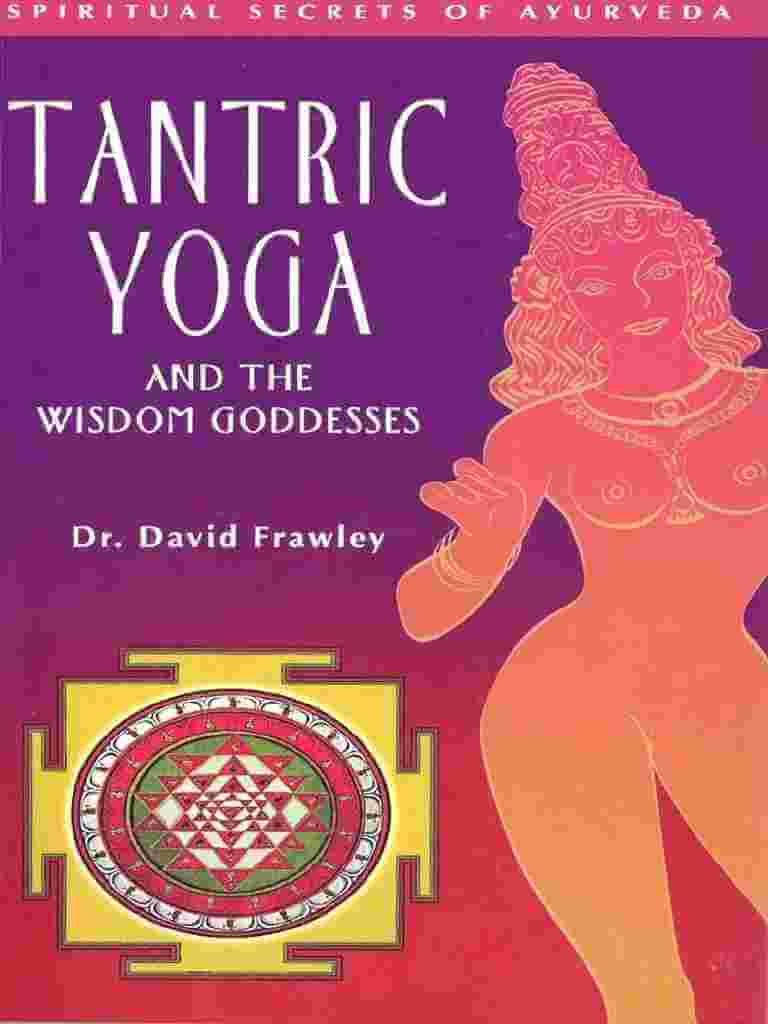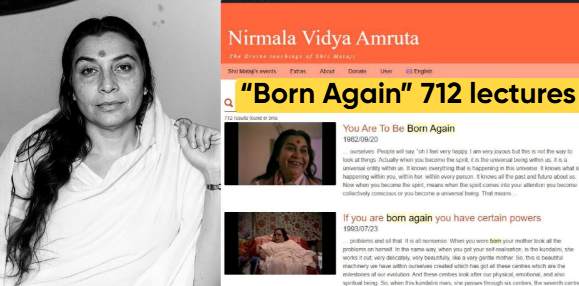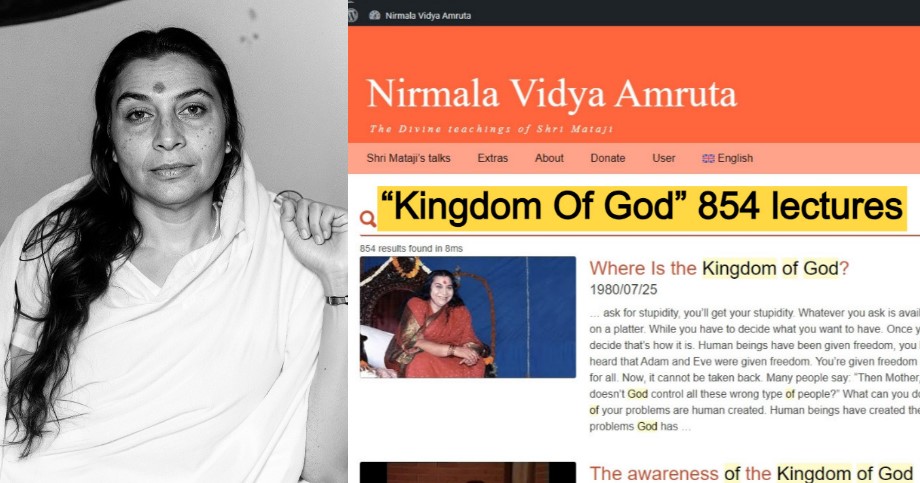“The kundalini is the essence of the Goddess. The Goddess is the source, and the force, of life; everyone has the feminine within.” Pechilis 2004, 23
Kundalini is revealed as the essence of the Goddess, the living power of Adi Shakti within every seeker. Shri Mataji Nirmala Devi affirmed that Kundalini is the Divine Feminine energy that awakens humanity into Self-realization, union with Brahman, and collective consciousness. Rooted in the Devi Gita and fulfilled through Sahaja Yoga, this teaching presents Kundalini not as abstraction but as the direct, experiential essence of the Goddess guiding spiritual transformation in our time.
“In the medieval period, there is an ultimate feminine guru represented in a classical text: the Goddess. It is she, not a wife or a saint, who assumes the public role of teacher and is capable of teaching all of humankind, which is the perspective advanced in the Devi Gita... the culmination of earlier stories of the Goddess found in the puranic mythological stories and in early tantric texts, precisely because the Devi Gita raises the Goddess to the level of Supreme Ruler. In the Devi Gita, supreme cosmic power is unambiguously female: she is a beautiful goddess, her power is the feminine shakti, and she is not linked to a male god, being most frequently referred as Mother. In the text, she first appears as a blazing light, symbolizing brahman, then transforms into a womanly figure, who is the Supreme Ruler Bhuvaneshvari...”

What is unambiguous in the text is that all of humankind is essentially female. The Devi Gita asserts this axiom in two ways. On one level, the Goddess is brahman; thus, humankind's true inner essence, the divine self, is the Goddess. On another level, the Devi Gita explicitly connects the Goddess to the concept of kundalini from yoga theory.
The theory of kundalini yoga is known from other texts, on which the Devi Gita draws in presenting the Goddess's teaching on the subject. Basic concepts in this theory of yoga include the understanding that humankind possesses a 'subtle body' alongside the material body. This subtle body is homologized to cosmic entities and their corresponding cosmic energies. The power center is the kundalini, imagined to be coiled like a serpent at the base of the spine. Uncoiling this shakti energy through disciplined activities, including controlled breathing, correct posture, and meditation, is the goal, for it is only through the release of the kundalini that humankind can reach its full potential in sharing the fundamental essence of the universe. With its emphasis on the Goddess as the Supreme Ruler, the Devi Gita makes a unique connection: The kundalini is the essence of the Goddess. The Goddess is the source, and the force, of life; everyone has the feminine within, and must embrace it, then release it, in order to achieve liberation.”
Karen Pechilis, The Graceful Guru
Oxford University Press, (August 5, 2004) pp. 23-25
Tantric Yoga and the Wisdom Goddesses

“Kundalini, often translated as the 'serpent power,' is a term which has gained some recognition today, particularly in yogic and New Age circles, though it is seldom properly understood. Kundalini literally means a coiled-up energy or the power that dwells in a cave (kunda). For any transformation to be possible, an energy is needed to bring it about. For the transformation of consciousness a special and powerful energy is needed. This is Kundalini.”
Tantra presents a whole yogic and mantric science for developing Kundalini. However, this Tantric science has its foundation or parallels in Vedic, Vedantic and Yoga texts that speak of the transforming word (vak), the energy of consciousness (chit-shakti), or the power of knowledge (jnan-shakti), which are all synonyms for Kundalini.
The traditional role of Kundalini is different than the way in which it is generally viewed today, which is to regard it as a mere force to control and harness. Kundalini is a form of the Goddess and should be worshipped as Her power. It is not some psychic energy to be aroused but a Divine energy to be revered. Efforts to manipulate Kundalini through willful practice or forceful techniques are not only dangerous, but fail to recognize the reality of the Goddess and are contrary to her worship.”
David Frawley, Tantric Yoga and the Wisdom Goddesses
Lotus Press (March 1, 1994) p. 30
Kundalini Analysis
Kundalini, often described as the "serpent power," is a fundamental concept in yogic and tantric traditions, representing the latent energy coiled at the base of the spine. This energy, when awakened, is said to bring profound spiritual transformation, leading to enlightenment and union with the divine. The interpretations of Kundalini vary, but both The Graceful Guru by Karen Pechilis and Tantric Yoga and the Wisdom Goddesses by David Frawley offer insights into its deeply feminine nature and sacred significance.
Shri Mataji Nirmala Devi and the Unprecedented Role in Kundalini Awakening

Shri Mataji Nirmala Devi is revered as the incarnation of the Goddess and the Paraclete-Holy Spirit, fulfilling the ancient promise of Kundalini awakening. Unlike other spiritual traditions that emphasize rigorous practices to awaken Kundalini, Shri Mataji introduced a spontaneous and accessible method through Sahaja Yoga. She described the Kundalini as the pure, chaste desire within each individual, free from lust or greed. It is the primordial power that nourishes, protects, and guides the seeker toward self-realization.
The Feminine Essence of Kundalini
The Graceful Guru emphasizes the association of Kundalini with the Goddess, particularly in the Devi Gita. The Goddess, in this context, is not merely a deity but the ultimate guru and supreme cosmic power. As Pechilis explains:
"What is unambiguous in the text is that all of humankind is essentially female. The Devi Gita asserts this axiom in two ways. On one level, the Goddess is brahman; thus, humankind's true inner essence, the divine self, is the Goddess. On another level, the Devi Gita explicitly connects the Goddess to the concept of kundalini from yoga theory."
This passage underscores the idea that Kundalini is not simply an impersonal energy but a manifestation of the Goddess herself. It reinforces the notion that spiritual liberation is intrinsically linked to embracing the divine feminine within.
Similarly, David Frawley in Tantric Yoga and the Wisdom Goddesses presents Kundalini as a divine force rather than a mere energy to be controlled. He states:
"Kundalini is a form of the Goddess and should be worshipped as Her power. It is not some psychic energy to be aroused but a Divine energy to be revered."
This perspective aligns with the Devi Gita's assertion that Kundalini is not merely a mechanical force but a sacred embodiment of the Goddess's presence within each being.
Kundalini as the Path to Liberation
Both texts highlight the transformative potential of Kundalini awakening. Pechilis describes the process as uncoiling the Shakti energy through disciplined practices like meditation, breathing exercises, and postures. She notes:
"Uncoiling this shakti energy through disciplined activities, including controlled breathing, correct posture, and meditation, is the goal, for it is only through the release of the kundalini that humankind can reach its full potential in sharing the fundamental essence of the universe."
This aligns with Frawley's assertion that Kundalini is essential for the transformation of consciousness:
"For any transformation to be possible, an energy is needed to bring it about. For the transformation of consciousness, a special and powerful energy is needed. This is Kundalini."
Both authors emphasize that Kundalini is not a force to be recklessly manipulated but a sacred energy requiring reverence and devotion. While modern interpretations sometimes focus on techniques to "awaken" Kundalini, these traditional texts caution against forceful methods, advocating instead for devotion to the Goddess and a disciplined spiritual practice.
Shri Mataji as the Graceful Guru and the Fulfillment of the Promise
Shri Mataji's teachings bring a new dimension to the understanding of Kundalini. Her method of Sahaja Yoga allows for the effortless awakening of the Kundalini, leading to the state of being "born again of the Spirit" as Jesus described in John 3:5-8. Unlike traditional approaches requiring years of discipline, Shri Mataji's grace enables seekers to experience self-realization instantly, feeling the cool breeze of the Holy Spirit—a direct sign of Kundalini awakening.
Her advent represents the culmination of ancient wisdom, offering humanity the opportunity to awaken to its divine potential and experience the Kingdom of God within. Shri Mataji emphasized that the Kundalini is the living energy of the Divine Mother within each individual. She described it as the "tape recorder" of one's life, knowing every detail of one's being and guiding the seeker toward self-realization with utmost care and compassion.
Conclusion
Kundalini, as presented in The Graceful Guru and Tantric Yoga and the Wisdom Goddesses, is deeply intertwined with the divine feminine. It is not merely a force but a sacred presence, the embodiment of the Goddess herself. To truly awaken Kundalini is to recognize and honor this divine power with reverence, discipline, and devotion.
Pariah Kutta (https://adishakti.org)OpenAI. (2025). ChatGPT [Large language model]. https://chatgpt.com





